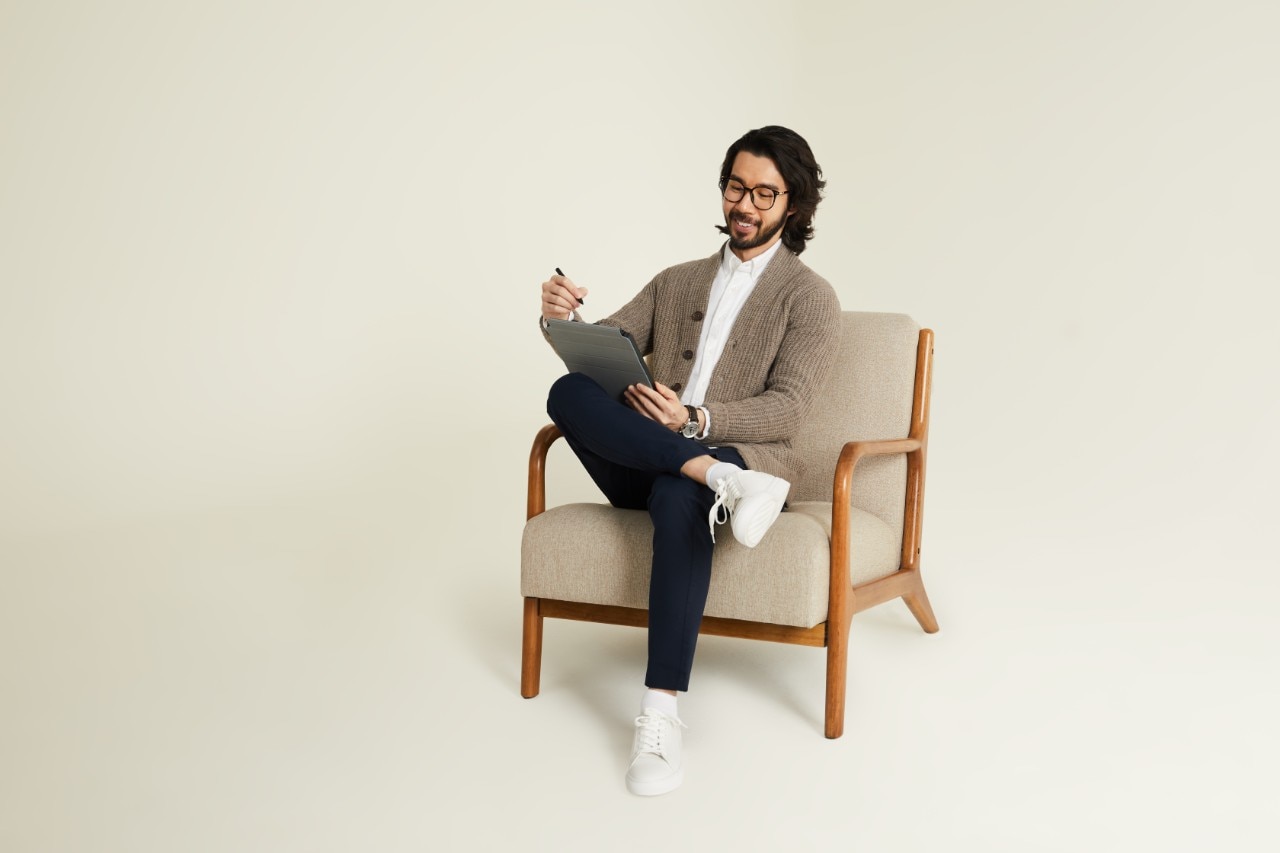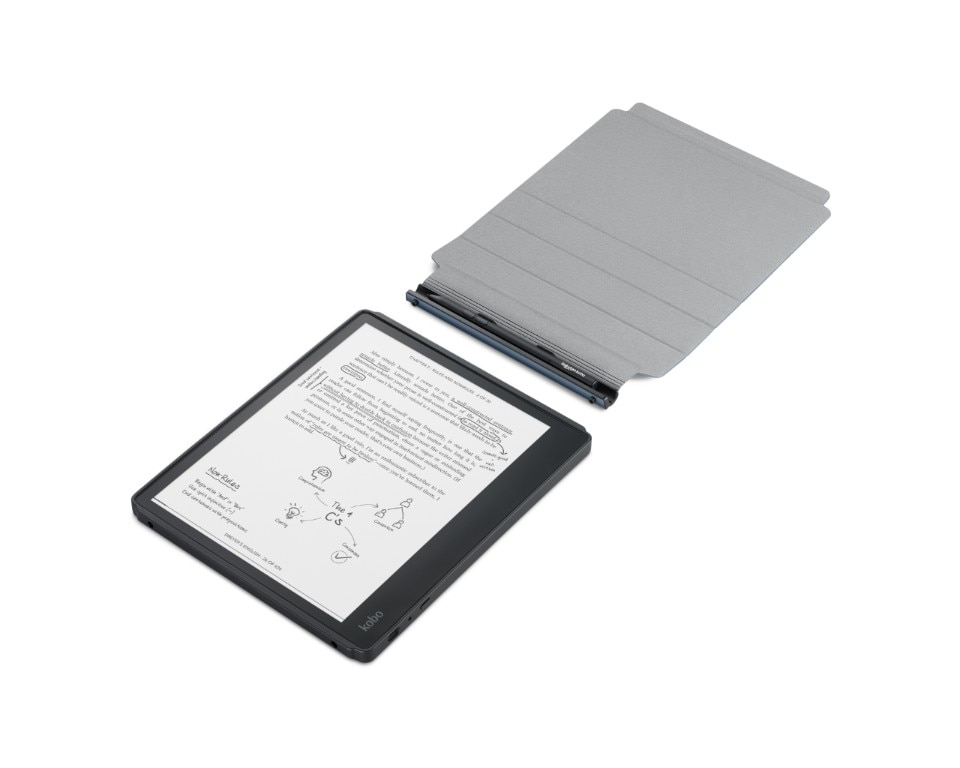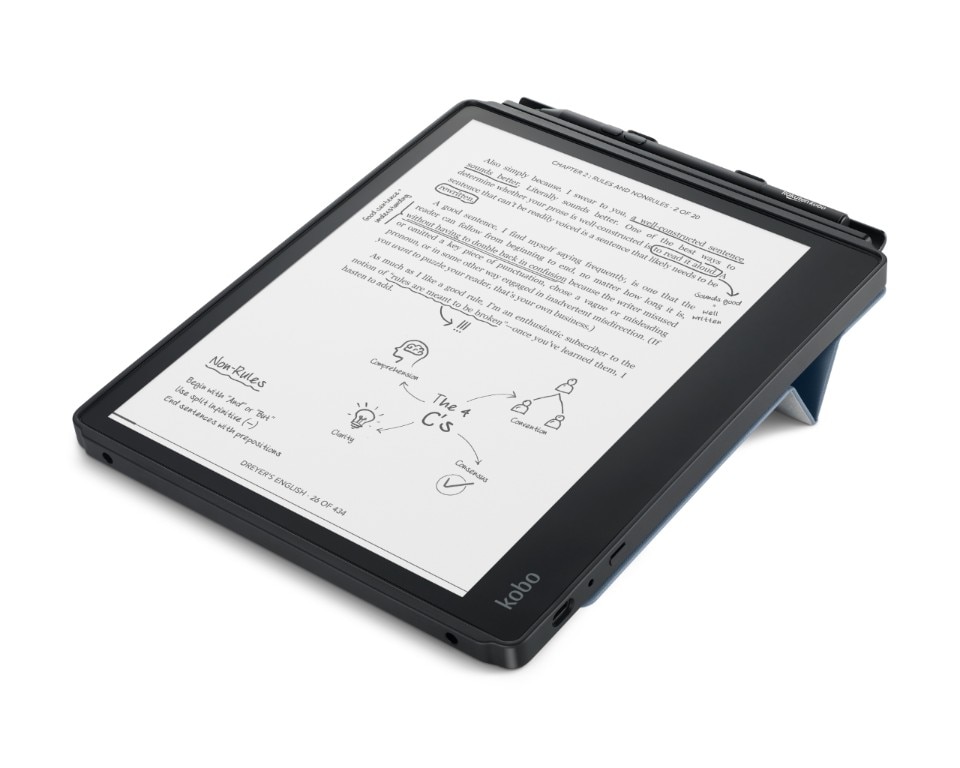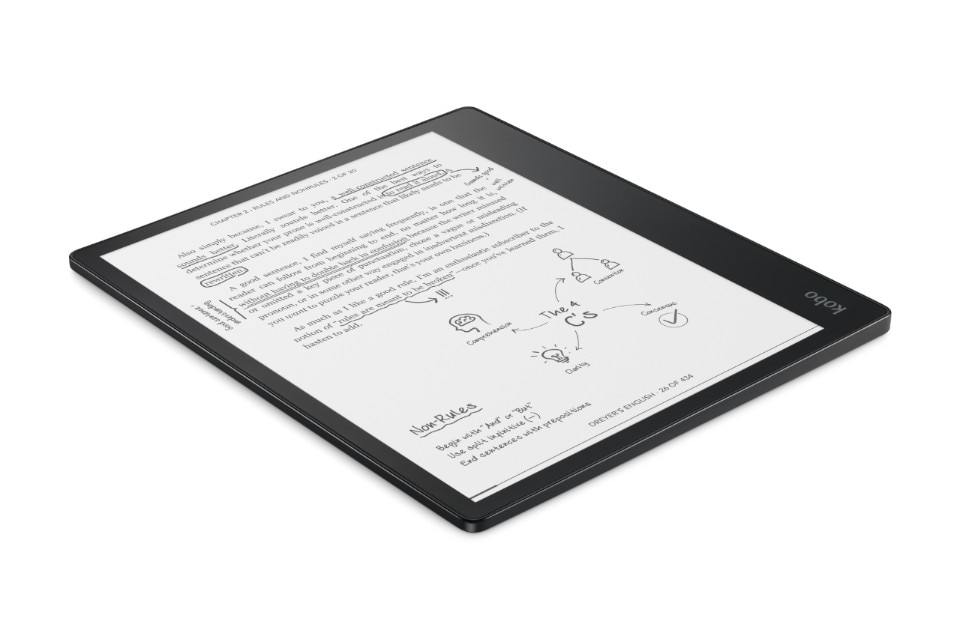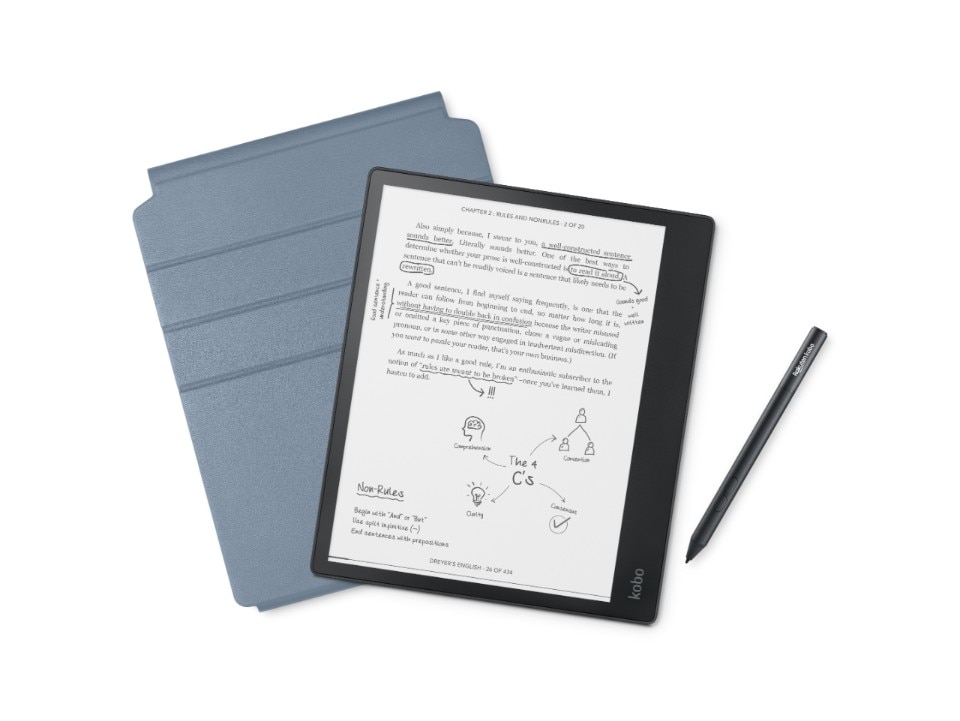While you could easily label a three-year-old smartphone as obsolete, it’s a pretty different story when it comes to ebook readers. A relevant point of this family of devices is longevity. And that's the positive effect of their biggest problem under a technology point of view: ereaders fall short in terms of innovation and in the last few years, we saw only some small changes in size, slightly better e-ink screens and nothing more. The biggest turning point was the introduction of backlight some years ago. The introduction of coloured e-ink screens, a feature anticipated for a long time, has not happened yet, and maybe it never will. This means that probably you can be delighted with a Kobo or a Kindle that’s even a decade old. Something that’s impossible when you consider smartphones.
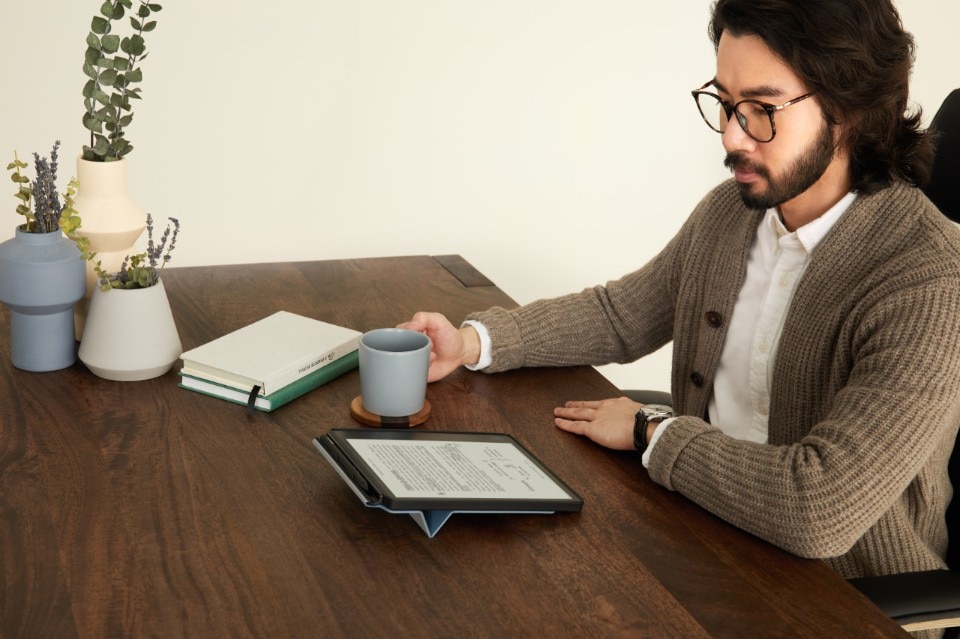
At their debut, more or less 15 years ago, ebook readers looked ambitious and more innovative than they feel today. Many users still idolize the Kindle DX, a wide-screen e-reader (9.7”) launched by Amazon back in 2009 and soon discontinued. While there’s a niche of e-ink tablets that are more or less the size of an iPad – focus-oriented Remarkable is probably the most noticeable among them – it’s Kobo that reintroduces to the mass market the concept of a large-sized reader with the new Elipsa. The Toronto-based company, specialized in ebooks and subsidiary of the e-commerce and fintech Japanese behemoth Rakuten, has a wide selection of differently sized devices in its portfolio, ranging from 6-inch readers to the Forma, that has a 8” screen. “At 10.3”, Kobo Elipsa is the largest eReader that we’ve ever developed”, says Ramesh Mantha, VP of Product and Devices Rakuten Kobo, adding that the new e-reader was designed to provide “the best hybrid reading and writing experience”.
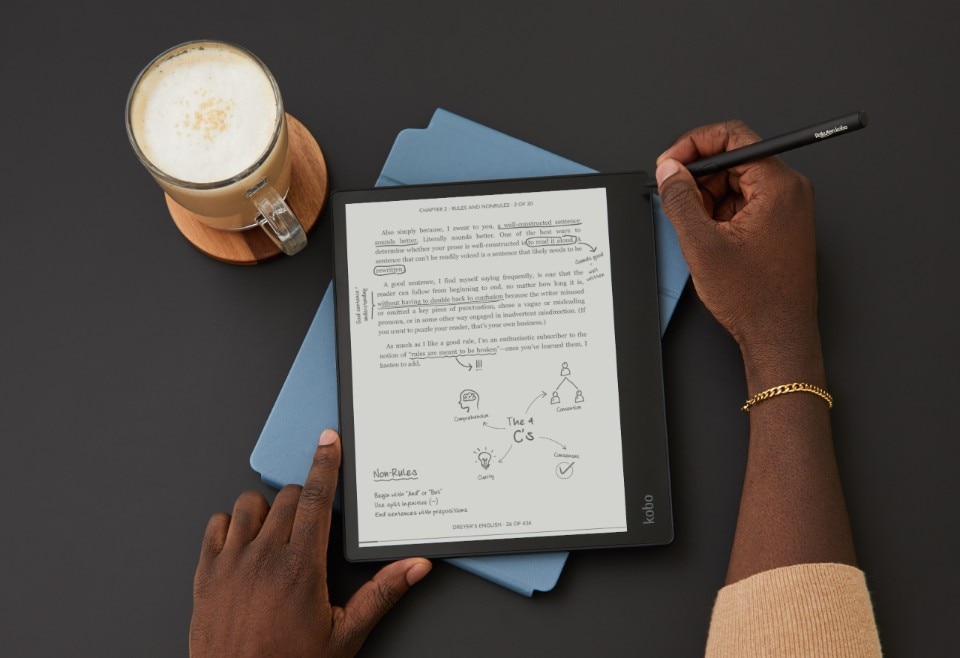
Elipsa is not just an ebook reader with a larger screen, but introduces a new whole device concept in Kobo’s portfolio. “Readers can mark up their eBooks and PDFs, make notes in the margins, highlight passages, or simply take notes through an infinite notepad, all with the focus and lack of distraction that makes ereaders so appealing”, Ramesh Mantha explains. He points out that the device was designed for “people who read for information, and those who want to engage with their books and get more out of them”.
With this kind of user in mind, Kobo designed an ereader that employs “as much screen surface as possible to ensure the ideal layout for marking up ebooks and capturing ideas”. Ramesh Mantha also stresses how Elipsa is the first eReader on the market to feature the Carta 1200 E Ink technology for a faster display, quicker page turns and deeper contrast.
At a first glance, when powered up Elipsa just looks like an oversized Kobo e-reader. The interface is exactly the same as a Forma, Nia or Clara HD, a welcome screen that blends contents and shopping suggestions. “While innovation is at the forefront of our design for Elipsa, we always want to ensure that there is continuity across our full family of devices”, says Ramesh Mantha, but it’s a pity that the notebook feature, the device’s most innovative, relegated to a small icon on the bottom border of the screen, hasn’t a proper spot in the welcome page.
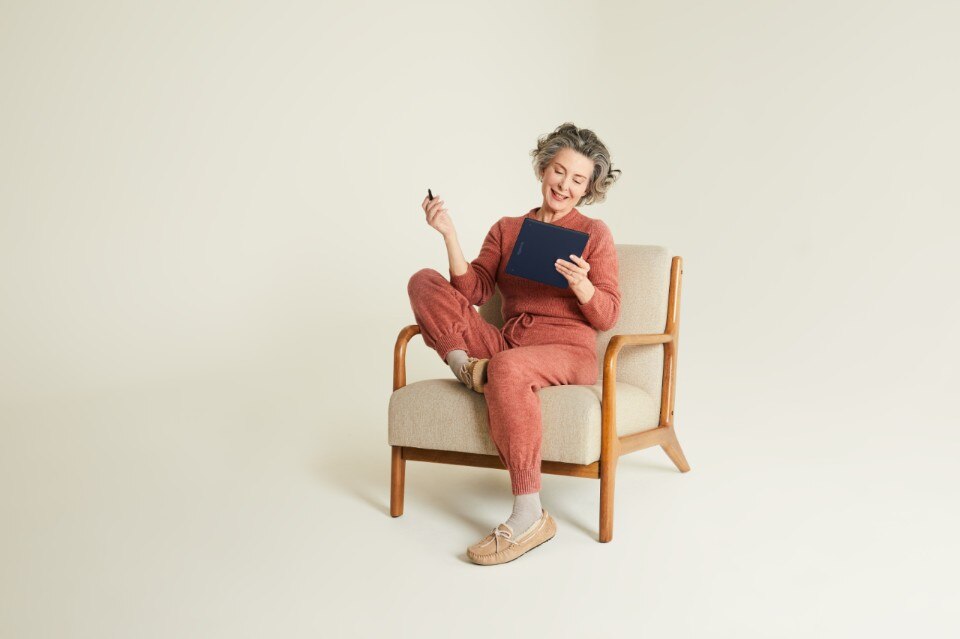
Kobo Elipsa features two different kinds of digital notebooks, basic and advanced: the latter supports handwriting-to-type conversion, free form sections, diagrams and equations. When asked if more options are coming, and more types of paper, the answer provided by Kobo is that “we always build with the future in mind, but don’t currently have any other plans we’re able to speak to”. At the current time, on the reviewer sample we tested, notetaking works well but is a bit laggy, and while you can sketch some schematic drawings, the device probably doesn’t fit the needs of creatives. It sticks with the idea of a device that blends the boundaries between a book, notebook and bookstore; obviously, it was primarily designed to offer a premium handwriting and reading experience.
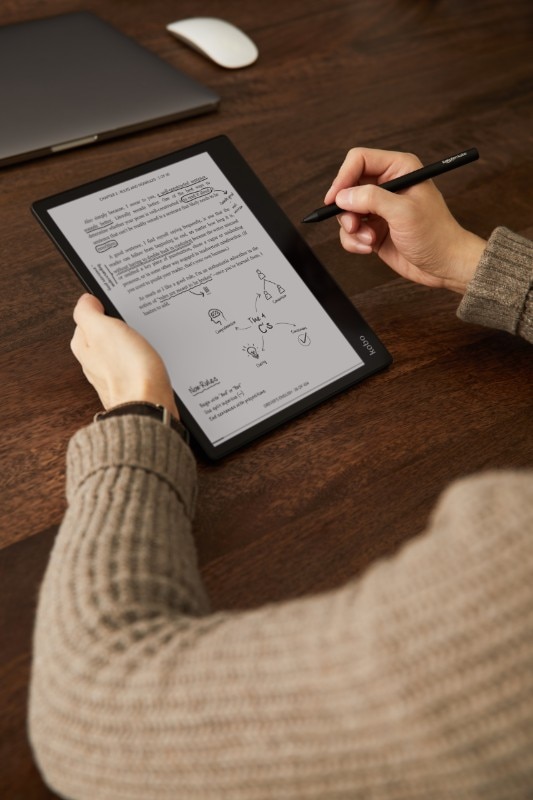
Magnetic and easily detachable, the cover is a key element in Elipsa’s design. It protects the device and can host the stylus and can be used as a stand that holds the ereader in a position really convenient for reading and annotating. “Our design team spent a lot of time envisioning how users would hold and transport Elipsa”, Ramesh Mantha explains. “However, we also always consider colour, materials, fashion and style, because the cover must not just be functional, but also beautiful”.
In designing such a device, so much bigger than usual and with slightly different usage than the usual e-readers, Kobo’s goal was to minimize weight and improve the weight balance. “We’ve designed a natural location for holding, with the centre of mass shifted to that side to minimize effort and strain during long reading sessions”, the company’s VP explains to Domus. The iPad, with a slightly smaller 10.2”, screen is 27% heavier than Elipsa. “Another area of focus was the front light. A big challenge with illuminating an eReader screen is uniformity. This gets more difficult as the screen gets larger”.

“We see Elipsa as an enabler for thinking, learning and understanding. Reading is, of course central to that, but we also believe that note-taking is crucial”. Mr Mantha adds that with Kobo Elipsa, “readers can mark up their eBooks and PDFs, make notes in the margins, highlight passages, or simply take notes through an infinite notepad, all with the focus and lack of distraction that makes e-readers so appealing “. The device is perfect to read mangas, that are very popular in Kobo’s store, and perfectly exploits Pocket built-in integration. Reading longform articles is an experience that fits wonderfully on the large size of Kobo Elipsa, even if at this time it wasn’t possibile to take any note on them – a feature that we hope will be soon integrated.
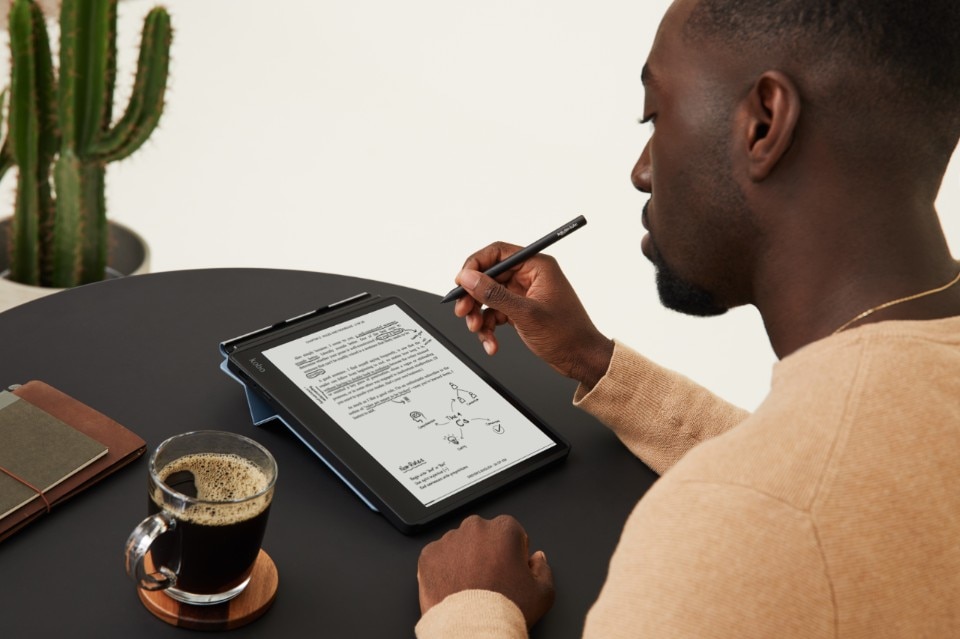
All images courtesy Rakuten Kobo


